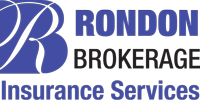In recent years, the insurance market has faced increasing challenges due to the escalating impacts of climate change. Events such as the recent storm in Texas highlight the severity and unpredictability of weather-related disasters, which are becoming more frequent and intense due to global warming. This situation has created significant difficulties for both insurers and reinsurers, affecting their ability to provide coverage and manage risks.
Increasing frequency and severity of natural disasters
Climate change has led to an increase in the frequency and severity of natural disasters. In Texas alone, there have been multiple billion-dollar disasters this year, primarily due to severe storms rather than hurricanes. These events have caused extensive property damage and significant financial losses for insurance companies. As a result, homeowners’ insurance premiums in Texas have skyrocketed, with rates increasing by an average of 22% in 2023, that is 11% over the national average, according to an analysis of Texas Department of Insurance data; according to The Texas Tribune.
The impact on reinsurance
Reinsurance, which provides insurance for insurance companies, has also been severely affected. The costs of reinsurance have risen dramatically as companies try to reduce their exposure to increasingly severe storms. For instance, the Texas Windstorm Insurance Association (TWIA) has had to pay significantly more for reinsurance, impacting their ability to cover claims. This has led to a situation where smaller insurers have become insolvent or have stopped covering high-risk areas, further straining the market (E&E News by POLITICO) (Risk Management Magazine).
Policyholder impact
Policyholders are feeling the impact of these changes through higher premiums and reduced coverage. Some insurance companies are raising deductibles or refusing to cover certain natural disasters altogether. This makes it more difficult for homeowners, especially those in high-risk areas, to obtain affordable insurance. The rising costs are particularly challenging for middle and low-income households, who may be priced out of their homes or forced to go without insurance, facing financial ruin in the event of a disaster (Columbia Climate School) (Risk Management Magazine).
The need for proactive measures
To mitigate these issues, it’s crucial for homeowners and businesses to be proactive in maintaining their properties and ensuring they meet safety standards. This includes making homes and commercial establishments more resilient to natural disasters by using fire-resistant materials, installing impact-resistant windows, and keeping properties well-maintained to reduce risks. Additionally, staying informed about insurance policy changes and maintaining timely premium payments can help policyholders manage their insurance costs more effectively (E&E News by POLITICO) (Columbia Climate School).
In resume, insurance market is becoming increasingly volatile due to the growing impact of climate change. Insurers and reinsurers are struggling to adapt to the new reality of more frequent and severe natural disasters, leading to higher costs and reduced coverage for policyholders. It is essential for all stakeholders, from insurance companies to homeowners and businesses, to take proactive measures to manage risks and ensure continued coverage in these challenging times.
For more detailed insights and recommendations, feel free to reach out to us at Rondon Brokerage. We are here to help you navigate these complex challenges and secure the best possible coverage for your needs.





